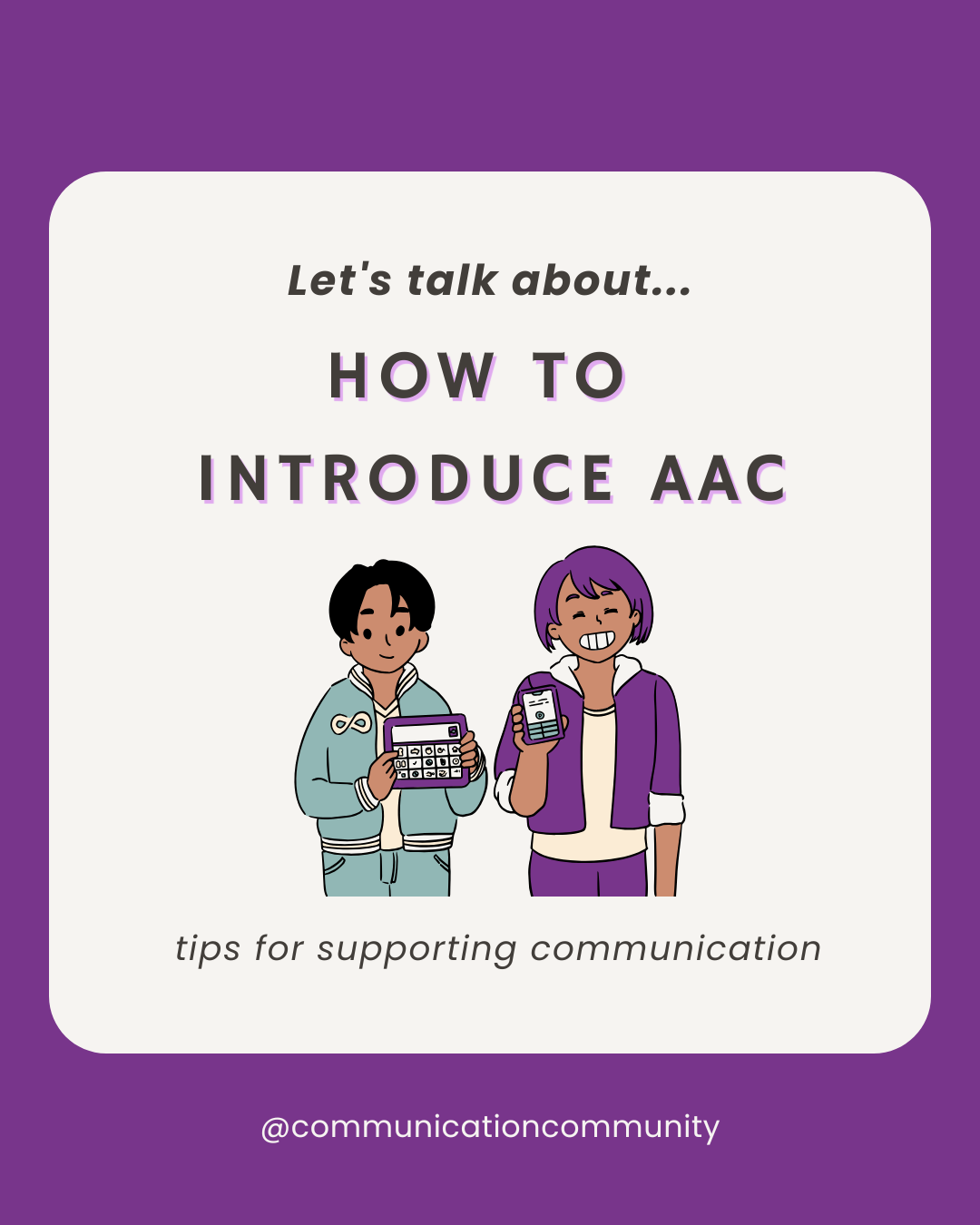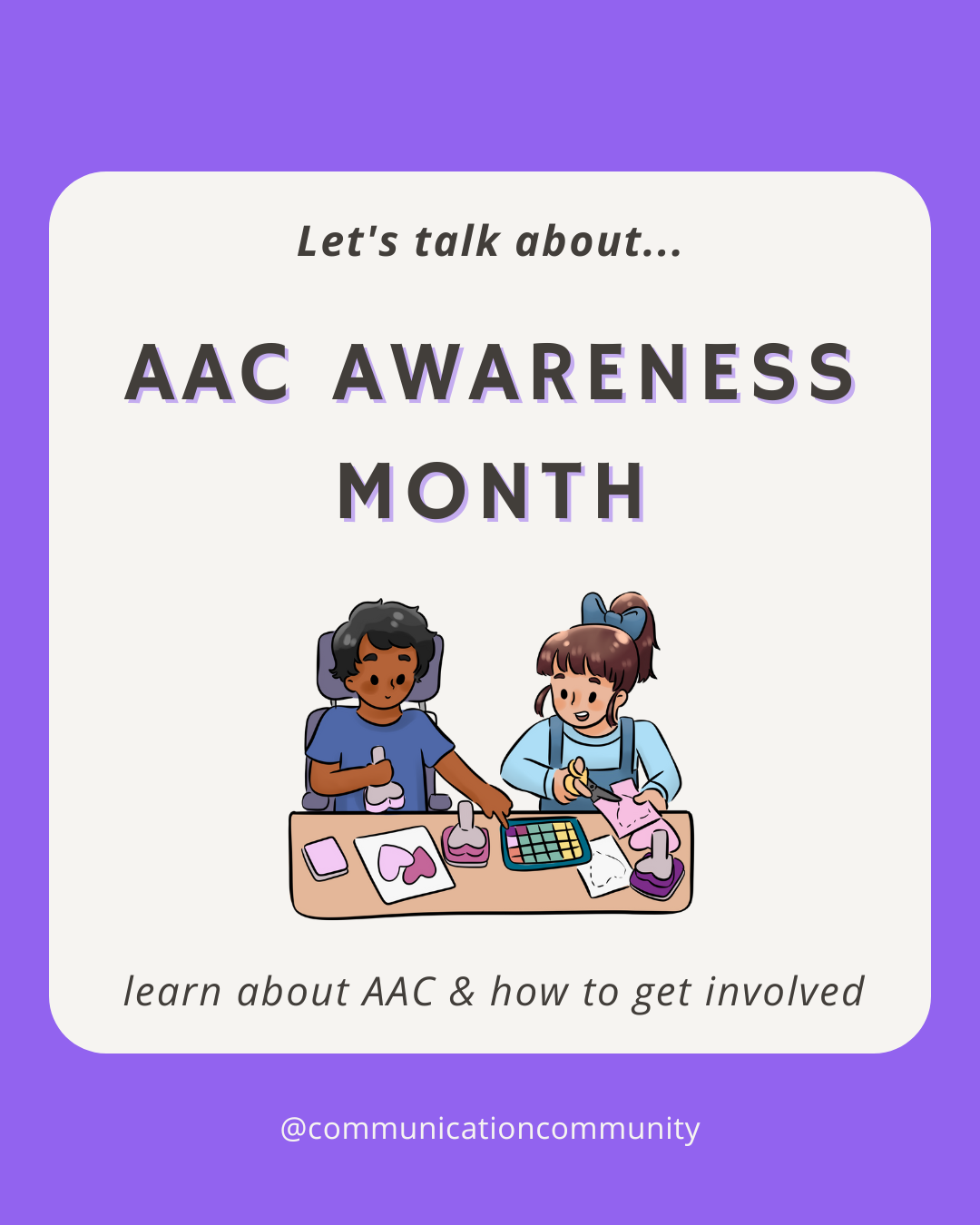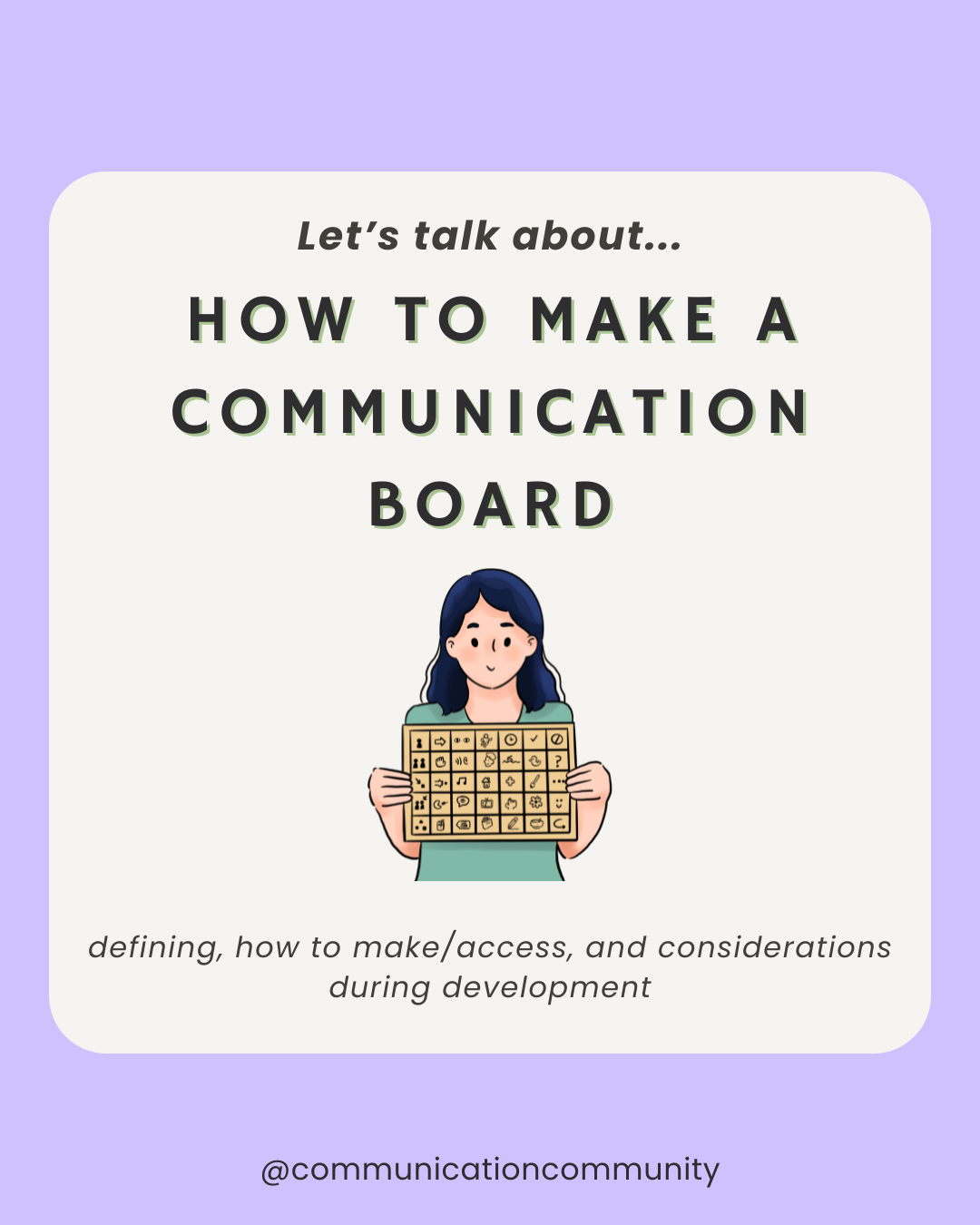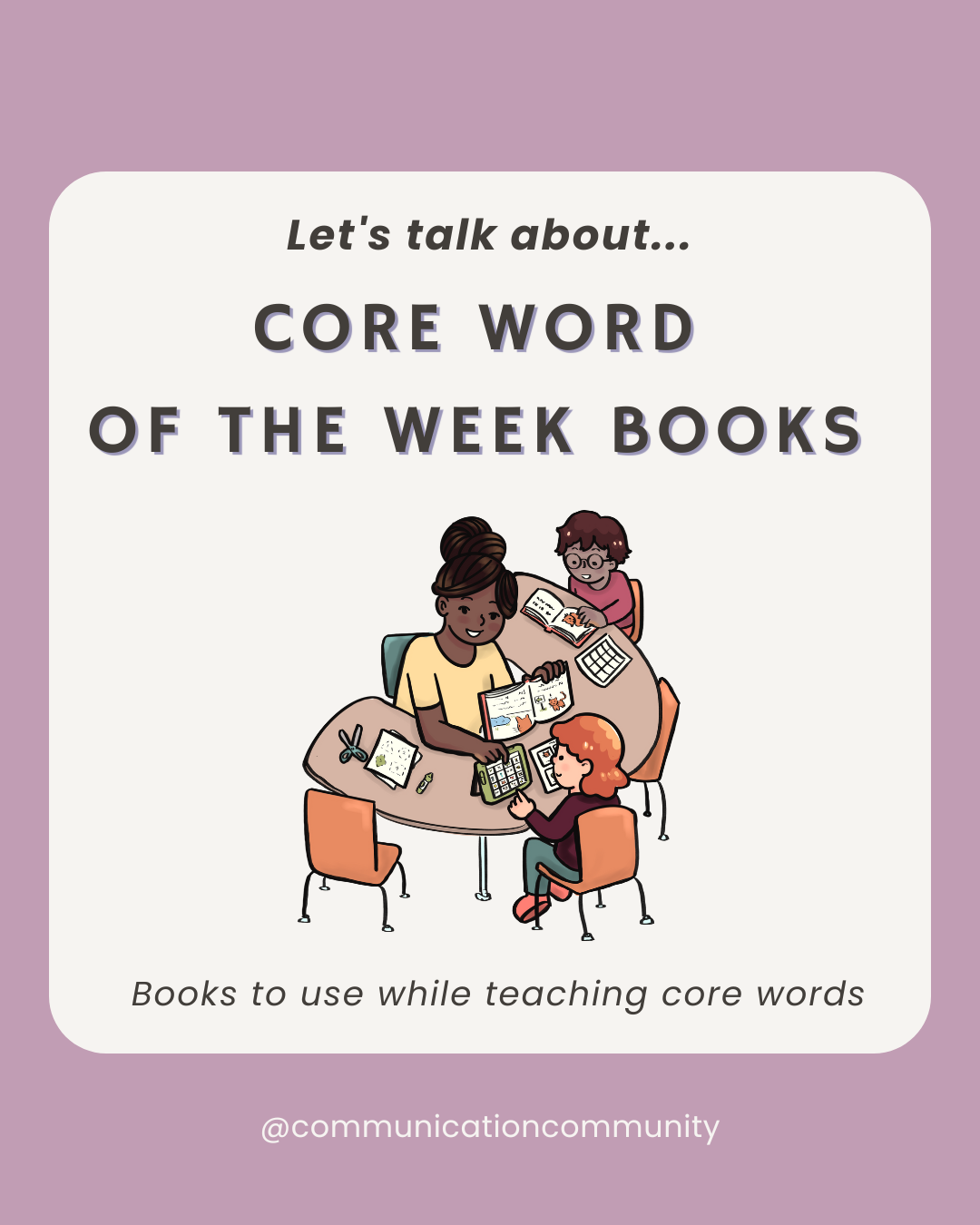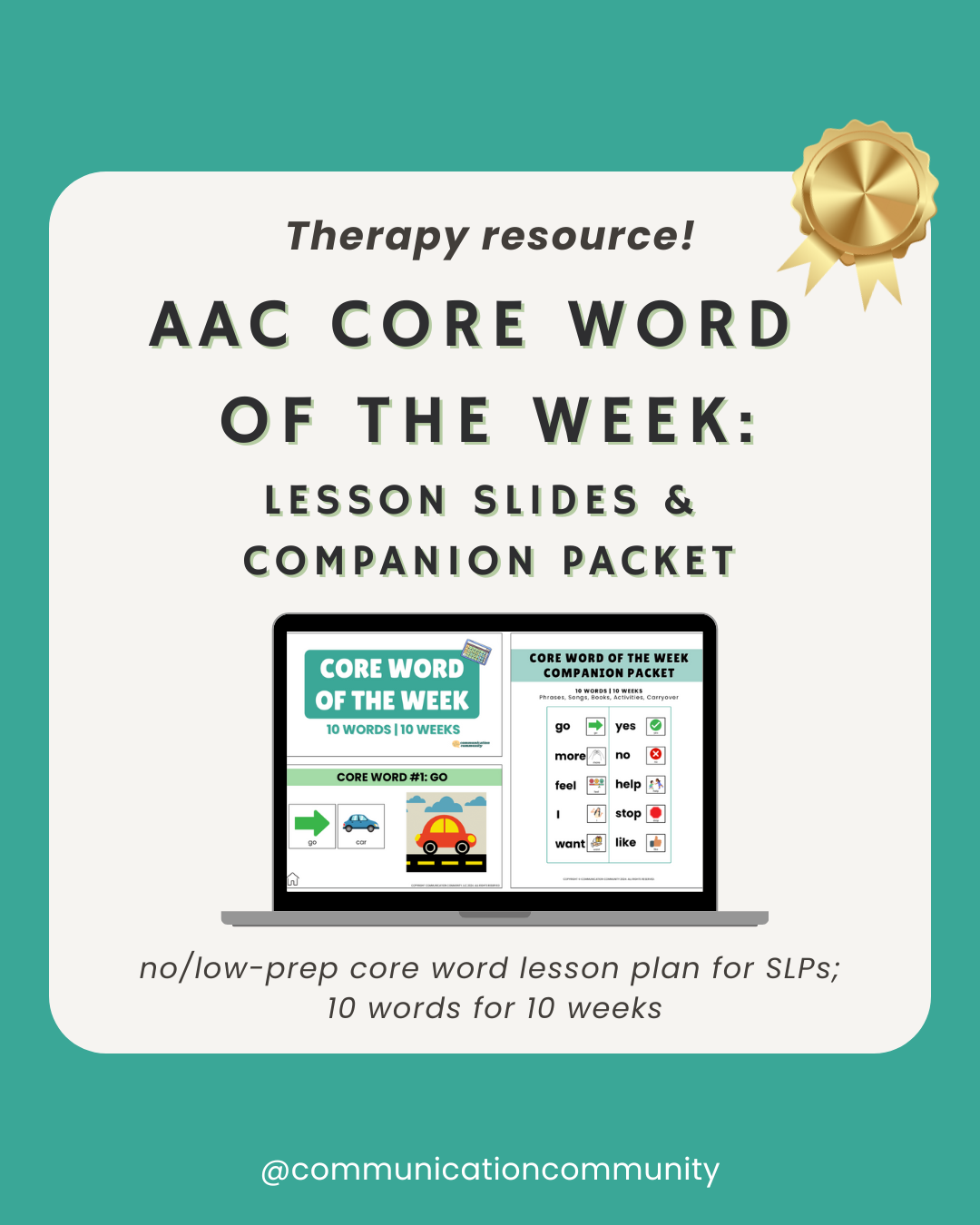Modeling without expectation is a low-pressure way to model AAC use in a natural environment. Read more about AAC, who can participate in “modeling without expectation,” and tips for doing so!
What is Augmentative and Alternative Communication?
Augmentative and alternative communication (AAC) is used to augment (increase) an individual’s ability to communicate and/or provide an alternative way of communicating. It may be used over a long period of time, temporarily, or situationally. Individuals who have difficulty communicating by speaking may benefit from AAC.
There are many different forms of AAC, including unaided AAC and aided AAC. Unaided AAC is where an individual uses signs or gestures to communicate. Aided AAC is where an individual uses materials in addition to one’s body to communicate, including notebooks, whiteboards, communication books, or high tech speech-generating devices.
Find more information about AAC systems, accessories, and activities here.
Who is Involved in AAC Use
Speech-language pathologists (SLPs) play a central role in the world of AAC but there are usually other individuals involved in an AAC user’s team as well. SLPs may complete AAC evaluations, provide recommendations, secure funding, and support AAC system use for individuals who would benefit from them. In addition to SLPs, parents/caregivers, teachers, related support professionals, and medical professionals may also play a role in AAC acquisition and use.
SLPs likely are only able to spend 1-2 hours (or less) each week supporting individuals who use AAC, which is why it can be beneficial for other members of the support team to also be knowledgeable about the user’s AAC system. One of the ways they can do this is by providing models of AAC use.
When we introduce AAC, the goal of AAC use is not to force communication or compliance, it is to teach and encourage communication.
The Importance of Modeling AAC Use
If you think about how children developmentally learn language, it is through consistent exposure and modeling. Babies and toddlers are exposed to a lot of spoken language every day and it takes them on average a year to say their first word and a few years to speak in full sentences. To frame this for an AAC user, it is just as important that they receive a lot of exposure to their language system (e.g., AAC device) so that they can learn language concepts across contexts and learn to use them effectively.
The Importance of Modeling Without Expectation
When young children are learning to speak, they are not expected to respond to everything that is said to them. This is relevant for individuals who use AAC as well. When we introduce AAC, the goal of AAC use is not to force communication or compliance, it is to teach and encourage communication. By providing AAC language support without expecting or forcing an individual to respond, we can model without expectations and provide a hands-on demonstration of how AAC can be beneficial for communication!
Ideally, you can help foster an environment that encourages and supports communication, even if big changes don’t happen overnight.
How to Model Without Expectation
Many of the strategies discussed in Aided Language Stimulation are relevant to modeling without expectation. Read more about it here!
Depending on the type of AAC in use, modeling may look different.
- For no tech (unaided) AAC, modeling may look like the use of gestures and signs. For example, you may model the sign “more,” then provide more of a snack. If the individual needs help, you may model the sign “help,” then provide them with the help they need (e.g., assisting in tying shoes).
- For low tech AAC, if the individual has a communication board or book, you may point to the symbols that represent what you are trying to communicate. For example, you may point to the symbol for “go” then push a car down a ramp or point to “go” then start pushing a wheelchair.
- For mid tech and high tech AAC, you may push the button on the device corresponding to what you are communicating. You may push “book,” then start reading a story, or “stop,” then halt the activity you are doing.
- You may also combine 2 or more words, symbols, or buttons when modeling. For example, you may push “more” + “music” to listen to more music or “no” + “food” when a meal is all done or to refuse a type of food.
5 Tips for Modeling Without Expectation
- Gain attention. Try to get the individual’s attention before communicating. You may say their name or position yourself near them to get their attention.
- Keep it simple. Use single words or short phrases incorporating core words.
- Don’t worry about mistakes. You may make mistakes and use the wrong sign or press the wrong button on a device. This is okay! Showing that mistakes happen is important in modeling AAC use.
- Explore the AAC system. High tech AAC devices often have hundreds of words in pre-programmed vocabulary sets. Model how you explore different folders and pages
- Exercise patience. Easier said than done (we know!) but providing ample time for an individual to respond and communicate can be hugely beneficial. This may mean modeling a phrase and allowing the individual 30-60 seconds to respond (if they choose) and/or modeling language for weeks before the individual initiates the use of their AAC system.
Looking for more AAC information?
- AAC Tips for Parents & Caregivers
- Modified Fitzgerald Key
- What is Multimodal Communication?
- Getting Started with AAC
AAC Resources
- AAC Goal Bank: a comprehensive packet that includes goal creation starters for all different aspects of AAC
- What others have said about it: "I have been updating my personal goal bank and since I do primarily AAC therapy, this resource was so vital in making sure I was developing solid goals. Well designed!"
- Core Word of the Week - MORE and GO: Activities for teaching core words - includes books, songs, and carryover activities
- What others have said about them: "We love some core words! Downloaded this for my DI room, I have several students using AAC systems."

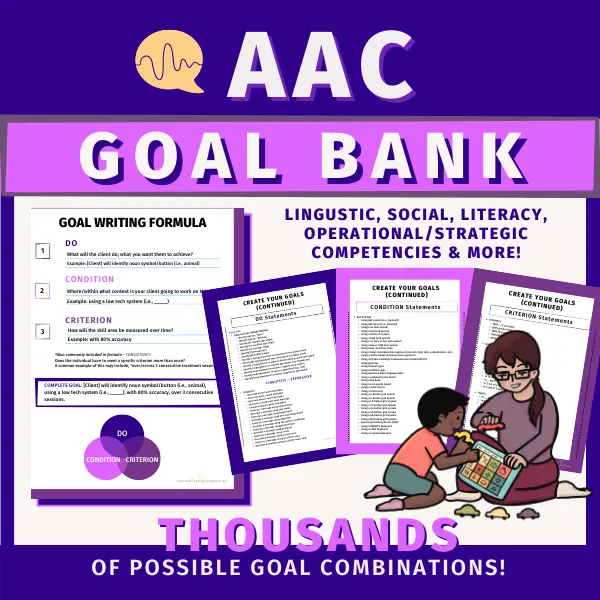

References & Further Resources
American Speech-Language-Hearing Association. (n.d.). Augmentative and Alternative Communication (AAC). Retrieved from https://www.asha.org/practice-portal/professional-issues/augmentative-and-alternative-communication/
OpenAI. (2023, March 26). Re: Modeling without expectation related to AAC [Online forum post]. Retrieved from https://www.chat.openai.com

![What is Modeling Without Expectation? [AAC resource]](https://www.communicationcommunity.com/content/images/2023/03/1.png)
